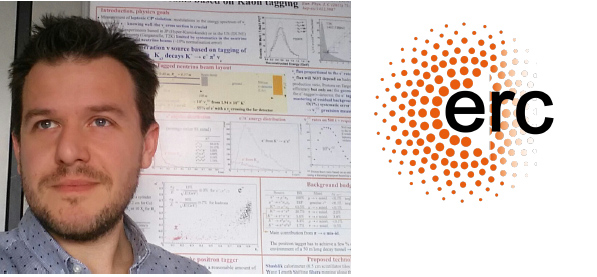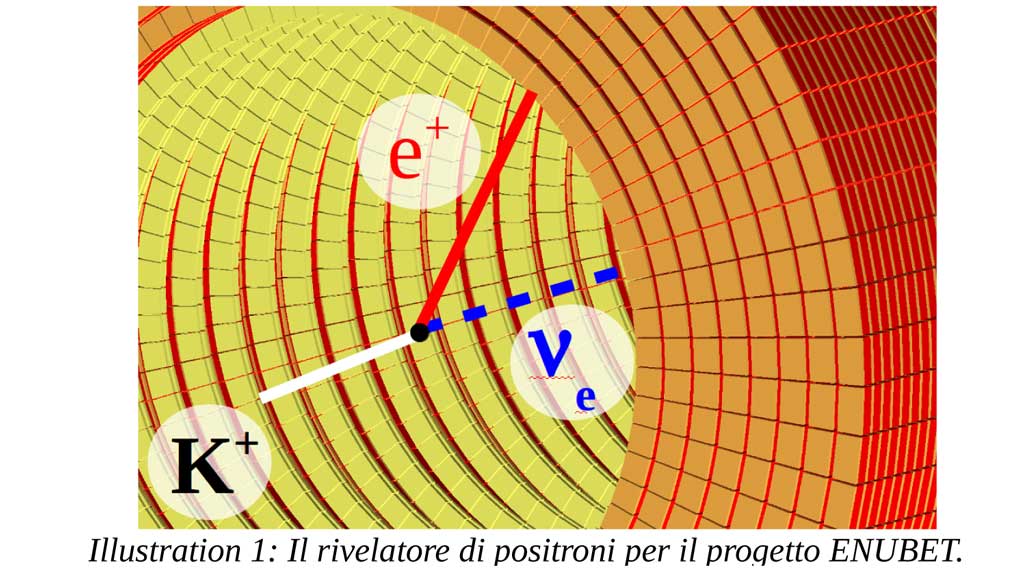| Fasci di neutrini di nuova generazione: l'ERC premia A. Longhin dell'INFN di Frascati |
 |
 |
|
Con una cifra di circa 2 milioni di EUR per una durata di 5 anni l'European Research Council (ERC) ha finanziato il progetto ENUBET (Enhanced NeUtrino Beams from kaon Tagging). Il coordinatore (Principal Investigator) è Andrea Longhin, ricercatore dell'INFN dei Laboratori Nazionali di Frascati. Longhin fa parte dei 302 ricercatori che quest'anno sono stati premiati a livello internazionale (con 585 MEUR) con i cosiddetti "Consolidator Grant" dell'ERC (*). Questi fondi sono destinati a fornire ai ricercatori, su base competitiva, una straordinaria opportunità di realizzare dei programmi di ricerca di grande impatto. ENUBET aprirà una nuova frontiera nella fisica del neutrino fornendo ai fisici uno strumento d'indagine inedito: una sorgente intensa di neutrini elettronici (νe) con una precisione dieci volte superiore agli standard. Riuscire a misurare i positroni che accompagnano la produzione dei neutrini elettronici nei tunnel di decadimento: è questa la sfida che ENUBET affronterà contando sul cospicuo finanziamento dell'ERC e su una squadra di esperti che si compone di fisici dell'INFN e di altri istituti europei. I tunnel di decadimento non sono ambienti particolarmente accoglienti per chi cerchi di installarci dei rivelatori: i flussi di particelle sono elevatissimi arrivando a un milione di particelle per secondo per centimetro quadro. Il tunnel di decadimento “intelligente” che ENUBET propone è la base per un grande rivelatore (~50 m) basato su innovativi foto-sensori al Silicio potenzialmente in grado di superare le difficoltà (resistenza alla radiazione, velocità di risposta, costi) che avrebbero reso del tutto velleitario un simile programma fino a solo qualche anno fa. In questi anni la comunità mondiale dei fisici del neutrino è impegnata nella costruzione di giganteschi esperimenti in Giappone e negli USA per studiare con precisione le sottili differenze tra oscillazione νμ → νe e quella che coinvolge le antiparticelle anti-νμ → anti-νe (CP violation leptonica). Le conseguenze di questa scoperta sarebbero sostanziali: la predominanza della materia sull'anti-materia che si osserva potrebbe venire proprio dal comportamento dei neutrini presenti nelle prime fasi della vita dell'Universo. ENUBET contribuirà a questo enorme sforzo su base internazionale con una vera iniezione di qualità consentendo di misurare, come mai fatto prima, tutti i dettagli delle interazioni dei νe con la materia ordinaria.
With a 2 million EUR funding for a duration of 5 years the European
Research Council (ERC) has awarded the ENUBET project (Enhanced
NeUtrino Beams from kaon Tagging). The Principal Investigator
is Andrea Longhin, a researcher working at the Frascati INFN
National Laboratories. Longhin is among the 302 researchers awarded at
an international level this year (with 585 MEUR in total) with
the so-called "Consolidator Grants" of the ERC (*).
This funding is meant, on a competitive basis, to offer
researchers an extraordinary opportunity to make innovative and
excellent research programs come to life. |






